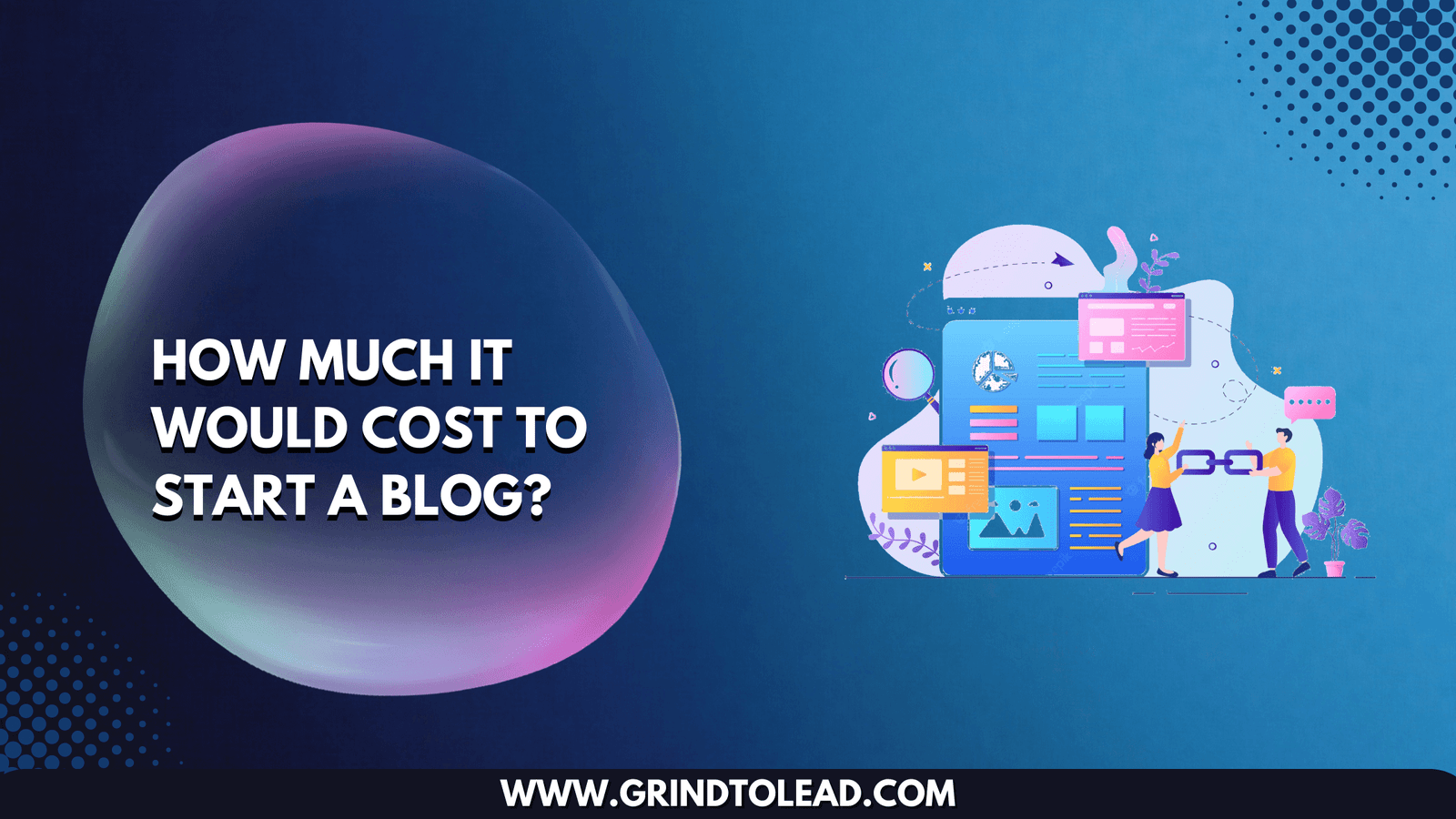Blogging is a great way to share your ideas and connect with like-minded people. It’s also a great way to establish yourself as an authority in your field or industry, build a community, and even make money. However, before you dive into the world of blogging, it’s important to understand the costs involved and the best practices for creating and promoting your content.
In this guide, we’ll walk you through the key steps and considerations for starting a blog, including:
- Choosing a blogging platform
- Selecting a domain name and web hosting provider
- Designing your blog and creating content
- Promoting your blog and building an audience
- Analyzing your blog’s performance and making improvements
By the end of this guide, you’ll have a solid understanding of what it takes to start and run a successful blog, and you’ll be ready to take the first steps towards creating your own.
Choosing a Blogging Platform
The first step in starting a blog is choosing a platform to host your content.

There are a variety of blogging platforms available, each with its own features and benefits. Some of the most popular blogging platforms include:
- WordPress WordPress is one of the most popular blogging platforms available, with over 60 million websites powered by the platform. It’s easy to use, customizable, and offers a range of plugins and themes to help you create a unique blog. WordPress is available in two versions: WordPress.com, which is a hosted platform, and WordPress.org, which is self-hosted.
- Blogger Blogger is a free blogging platform owned by Google. It’s easy to use and offers a range of templates to help you get started. However, it’s not as customizable as other platforms, and you’ll need to have a Google account to use it.
- Squarespace Squarespace is a website builder that also offers a blogging platform. It’s easy to use and offers a range of templates and design options. However, it’s more expensive than other platforms, and you’ll need to pay a monthly fee to use it.
- Wix Wix is another website builder that offers a blogging platform. It’s easy to use and offers a range of templates and design options. However, like Squarespace, it’s more expensive than other platforms, and you’ll need to pay a monthly fee to use it.
When choosing a blogging platform, it’s important to consider your budget, your technical expertise, and your goals for your blog. WordPress is a great option for most bloggers, as it’s easy to use, highly customizable, and offers a range of features and plugins to help you grow your blog.
Selecting a Domain Name and Web Hosting Provider
Once you’ve chosen a blogging platform, the next step is to select a domain name and web hosting provider. Your domain name is the web address for your blog, and your web hosting provider is the company that hosts your blog on their servers. Here’s what you need to know about each of these considerations:
Domain Name
Your domain name should be easy to remember, easy to spell, and relevant to your blog’s topic. Ideally, it should also be short and catchy. When selecting a domain name, consider using a keyword that’s relevant to your niche, as this can help improve your search engine rankings. You can purchase a domain name from a variety of domain registrars, such as GoDaddy or Namecheap. Prices vary, but you can typically purchase a domain name for around $10-$15 per year.
Web Hosting Provider
Your web hosting provider is the company that hosts your blog on their servers. It’s important to choose a reliable provider with fast loading times, as slow loading times can negatively impact your search engine rankings and user experience. Some popular web hosting providers include Bluehost, SiteGround, and HostGator. Prices vary, but you can typically find web hosting for around $3-$15 per month.
Designing Your Blog and Creating Content
Once you’ve chosen your blogging platform and set up your domain name and web hosting, it’s time to start designing your blog and creating content. Here are some tips to help you get started:

- Choose a Theme or Template Most blogging platforms offer a range of themes or templates to help you design your blog. Choose a theme that’s easy to navigate, visually appealing, and relevant to your niche. If you’re using WordPress, you can browse and install themes from the platform’s theme directory.
- Customize Your Blog Once you’ve selected a theme or template, customize it to make it your own. This might include adding a logo, changing the color scheme, or adding custom widgets or plugins.
- Create Content The most important part of your blog is your content. Create content that’s informative, engaging, and relevant to your niche. This might include blog posts, videos, infographics, or podcasts. Aim to publish new content on a regular basis to keep your readers engaged and coming back for more.
Promoting Your Blog and Building an Audience
Creating great content is only half the battle. To build a successful blog, you’ll also need to promote your content and build an audience. Here are some tips to help you get started:
Use Social Media Social media is a powerful tool for promoting your blog and building an audience. Share your blog posts on social media platforms like Twitter, Facebook, and Instagram, and engage with your followers to build relationships.
Guest Post on Other Blogs Guest posting on other blogs is a great way to get exposure for your blog and build backlinks to your site. Look for blogs in your niche and reach out to the owners to see if they’re accepting guest posts.
Network with Other Bloggers Networking with other bloggers can help you build relationships and grow your audience. Attend blogging conferences and events, join blogging groups on social media, and reach out to other bloggers in your niche to collaborate on content.
Analyzing Your Blog’s Performance and Making Improvements
Finally, it’s important to regularly analyze your blog’s performance and make improvements to help it grow. Here are some key metrics to track:
Traffic Track your blog’s traffic using tools like Google Analytics. Look for patterns in your traffic, such as spikes or dips, and adjust your content strategy accordingly.
Engagement Engagement metrics, such as comments and social media shares, can help you understand how your readers are interacting with your content. Use this information to improve your content and engagement strategies.
Conversion Rates
If you’re using your blog to sell products or services, track your conversion rates to see how effective your blog is at generating sales.
By regularly tracking and analyzing your blog’s performance, you can make data-driven decisions to help it grow and succeed.
Conclusion :-
Starting a blog can be a rewarding and fulfilling experience, but it’s important to understand the costs and best practices involved. By choosing the right blogging platform, selecting a domain name and web hosting provider, designing your blog, creating great content, promoting your blog, and analyzing your performance, you can create a successful blog that’s a valuable asset for your brand or business.


